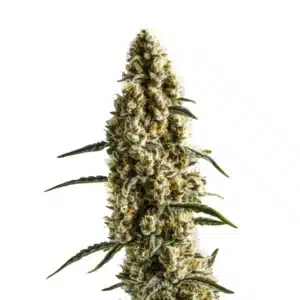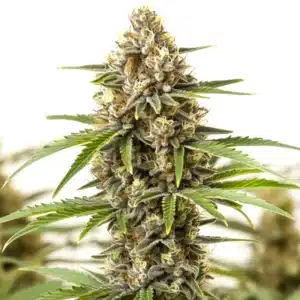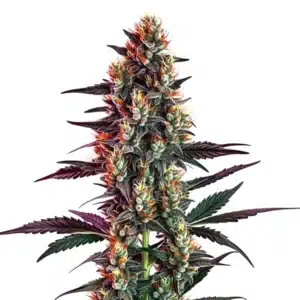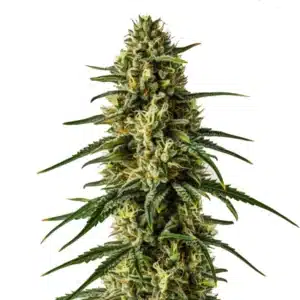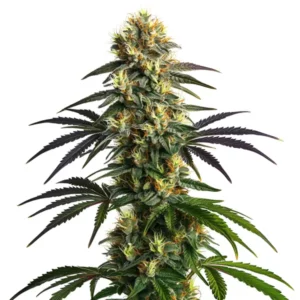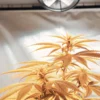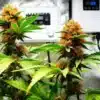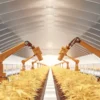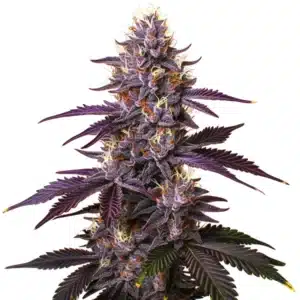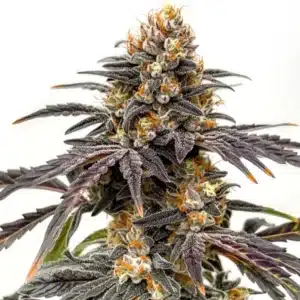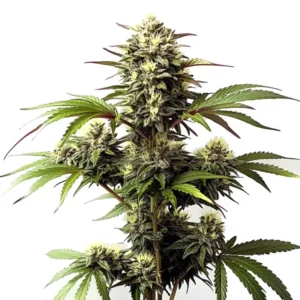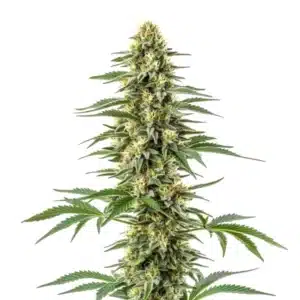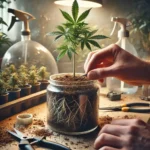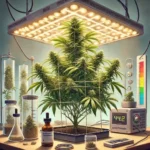
Why Can’t You Clone Autoflowers? Challenges and Tips
Grasping Autoflowering Genetics
The unique genetics of autoflowering cannabis, known as ruderalis, were born from the plant’s adaptation to the harsh climates of the far north, where seasons are short with only a few months of light followed by months of darkness. This evolutionary pressure created a plant that flowers based on age, not light cues. Autoflowering cannabis strains have taken the cultivation world by storm, mainly due to their unique genetics that trigger flowering automatically instead of relying on specific light cycles. This attribute makes them exceptionally user-friendly for novice growers. Many enthusiasts appreciate the rapid transition from the vegetative stage to flowering in only about 2-4 weeks.
These strains also maintain a compact size, growing shorter and bushier than photoperiod counterparts, which proves ideal for growers with small spaces. Their rapid lifecycle enables the harvesting of multiple crops in a single season. However, this compact growth pattern sometimes challenges cloning efforts as the plant’s accelerated schedule leaves less time to establish new growth properly.
Recommended Strains
Yumbolt Banana
|
|
THC | 20% - 25% (Medium) |
|
|
Type | Feminized |
|
|
Yield | Low |
|
|
Phenotype | 60% Indica / 40% Sativa |
Yumboldt
|
|
THC | 18% - 20% (Medium) |
|
|
Type | Feminized |
|
|
Yield | Medium |
|
|
Phenotype | 70% Indica / 30% Sativa |
Differences from Photoperiod Plants
Grasping why you cannot effectively clone autoflower plants requires comparing them with photoperiod varieties. Photoperiod strains depend on specific light cycles to initiate flowering, allowing growers to maintain the vegetative stage longer and easily take multiple cuttings. This flexibility enables continuous cloning and greater predictability.
Conversely, autoflower plants stick to a strict timetable; they flower once they reach a certain age without waiting for any intervention. Even if a grower takes a cutting at the earliest opportunity, the new plant struggles to develop roots and mature fully before entering the flowering stage.
Promos & Deals
Biological Limitations in Cloning
Developmental Stage Challenges
When attempting to clone autoflowering cannabis, one significant challenge emerges from the plant’s strict lifecycle. From the moment they sprout, autoflowers are internally growing and preparing to flower simultaneously. Their genetics are designed as a survival mechanism: in the face of any problem or stress, their default response is to stop vegetative growth and immediately trigger flowering to ensure reproduction. This is especially true for vigorous strains like NL5 x Haze Auto, whose rapid transition between stages is part of what makes them so resilient and productive. Autoflower varieties follow this predetermined schedule; thus, the developmental stages occur rapidly and leave minimal time for new cuttings to root and gain strength.
The genetic programming of these autoflower plants optimizes them for swift maturation, often producing weaker stems and root systems when grown as clones. Experienced growers emphasize that successful cloning under these conditions demands exact timing and impeccable environmental management.
Hormonal and Genetic Factors
Hormones drive plant growth, and in autoflower strains, specific hormonal balances encourage rapid flowering. The moment a grower takes a cutting, the delicate hormonal equilibrium shifts, often resulting in challenges for the clone to root properly. Autoflower genetics favor immediate reproductive maturity rather than prolonged vegetative growth.
Additionally, genetic diversity within autoflower strains means that even clones from the same mother plant might show unpredictable traits. This genetic instability can cause inconsistencies in plant quality and performance.

Cloning Techniques and Their Limitations
Standard Cloning Methods
Cultivators typically rely on standard cloning methods like applying cloning gel or using rooting hormones. When growers apply these techniques to autoflower varieties, they often discover that these methods fail to keep pace with the plant’s rapid lifecycle. The inherent speed of autoflower growth can impede this process, resulting in clones that struggle to establish before the flowering phase begins.
Adjustments Needed for Autoflowers
To boost the odds of successfully cloning autoflower strains, growers must modify their traditional techniques. Taking cuttings during the earliest stages of the vegetative period often yields better results. Utilizing specialized rooting gels and providing precise environmental conditions helps create a more favorable setting for these fast-cycling clones to thrive. Despite these measures, cloning autoflower varieties remains labor-intensive and prone to lower success compared to photoperiod plants.
Success Stories and Alternative Practices
Many seasoned growers share success stories that demonstrate innovative techniques for cloning autoflowers. These cultivators take cuttings from very young plants, ideally just before the rapid flowering phase begins, to improve rooting success. Some even experiment with hardy, fast-developing genetics like C99 x Early Skunk, using its vigorous growth as a reference point to better understand how timing and plant structure influence cloning attempts. Their experiences reveal that while cloning autoflower remains challenging, strategic planning and precise execution can yield positive outcomes.
Tips for Working with Autoflower Genetics
For those determined to work with autoflower genetics, practical tips can enhance the process. Many cultivators advise prioritizing overall plant health; a robust mother plant tends to produce more viable cuttings. However, many also recommend focusing on breeding rather than cloning as an alternative method. By crossing robust plants, growers can create seeds that reliably display desired traits without facing cloning challenges.
Research and Developments
Ongoing Studies in Cloning Technology
Researchers continuously study cloning technology in hopes of overcoming the challenges associated with autoflower genetics. Current investigations explore advanced methods such as tissue culture and biotechnological innovations that might one day yield higher cloning success rates. Researchers design these studies to accelerate root development and to modulate the hormonal balances that impede successful propagation. Their work opens exciting possibilities and inspires many growers to experiment with new techniques in the field.
These innovative studies provide fresh insights into genetic variability and the specific growth patterns inherent to autoflower plants. Advancements in cloning technology promise to make propagating these fast-cycling strains easier and more predictable. As scientific breakthroughs materialize, many cultivators eagerly anticipate a future where cloning autoflower becomes a reliable and standardized practice. This developing field encourages growers to keep abreast of new research for continuous improvement in their cultivation strategies.
Innovations Aimed at Overcoming Barriers
Innovators in the field of cannabis cultivation invest time and resources in creating techniques that increase the success of cloning autoflower strains. Pioneers develop new rooting hormones and growth enhancers specially formulated for the fast developmental cycle of these plants. Engineers design advanced propagation systems that adjust environmental conditions dynamically to support rapid root growth, ensuring that even autoflower clones gain sufficient traction in their limited growth window.
These new methods promise to change cultivation practices by improving overall outcomes and reducing the frustration commonly associated with cloning autoflower varieties. Gardeners recognize that embracing these innovations can transform their cultivation experience, making it easier to work with even the most challenging genetic profiles. As the industry evolves, continuous innovation pushes the boundaries of what growers can achieve using autoflower in their gardens.
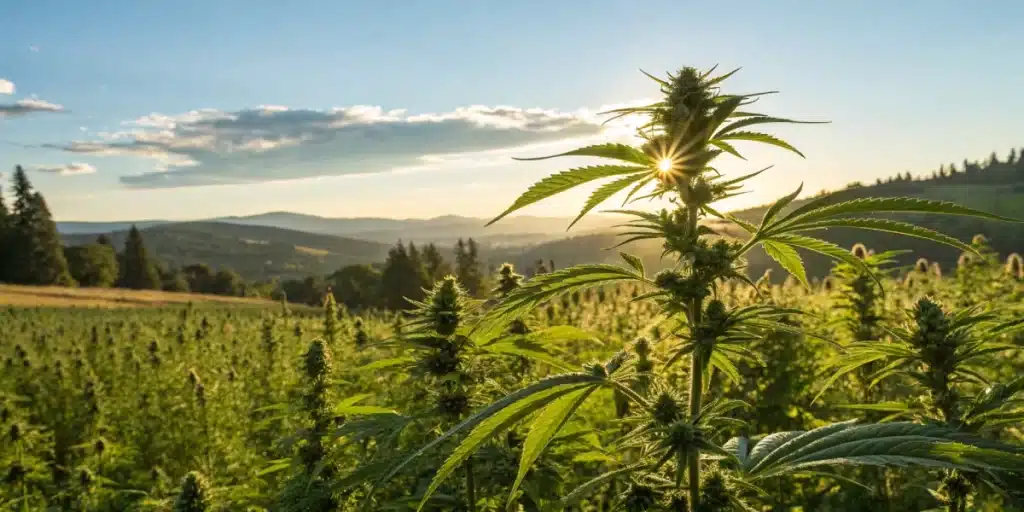
FAQs about why can’t you clone autoflowers
What makes autoflower strains difficult to clone?
Autoflower strains challenge growers because they follow a strict, predetermined lifecycle that rapidly leads to flowering. This quick transition leaves minimal time for clones to establish robust root systems. Hormonal and genetic factors contribute to the difficulties, forcing growers to work quickly and precisely. Each attempt at cloning requires careful timing to avoid missing the limited vegetative window that these plants offer.
Cultivators often report that even the best cloning techniques yield lower success rates with autoflower plants compared to their photoperiod counterparts. The natural rigidity of the autoflower lifecycle restricts adaptability, making every cutting a test of timing and environmental optimization.
Have any methods improved cloning success rates for autoflowers?
Some growers have increased cloning success rates by taking cuttings during the earliest vegetative stages and using specialized rooting gels. They actively adjust humidity and temperature levels to speed up root development, ensuring clones establish quickly. These proactive measures create conditions that favor rapid growth despite the inherent challenges of autoflower strains. Gardeners experiment relentlessly, seeking the perfect strategy to balance rapid cloning with the plant’s natural cycle.
Cultivators claim that while these methods have improved outcomes, they still do not match the cloning consistency seen in photoperiod plants. Each adjustment demands high precision and careful observation, forcing growers to continually refine their techniques.
Are there alternative propagation techniques for autoflowers?
Many growers choose alternative propagation techniques, such as breeding, instead of cloning autoflowers. By crossing robust plants with desirable traits, they produce seeds that reliably express these characteristics without facing cloning challenges. This active strategy circumvents the issues caused by the plant’s rapid lifecycle while still enabling growers to expand their genetic pool. In many cases, breeders achieve greater consistency and fewer resource limitations through seed production.
Adopting alternative methods lets cultivators avoid the frustrations associated with traditional cloning. Gardeners often find that propagating via seeds offers improved genetic stability and adaptability compared to cloning autoflower, making it a preferred method in many commercial and personal cultivation settings.


